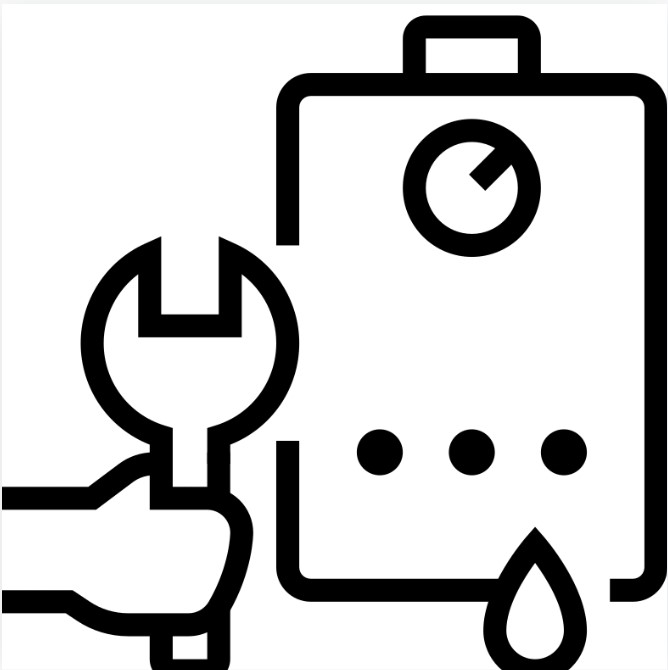How to Repressurise Worcester Boiler When Pressure is Too Low?
A Worcester Bosch boiler with low pressure is usually characterised by a malfunctioning heating system or boiler, which can be confirmed by checking the boiler’s pressure gauge at the front.
It will either be a digital or a standard pressure gauge with a needle and often indicated initially by a flashing blue light on your Worcester boiler.
The ideal reading for the gauge should be between 1 bar and 1.5 bar, therefore If it reads below 1 bar, then you have low boiler pressure and you need to re-pressurise your Worcester boiler.
Need a new boiler? Check out the latest Worcester Bosch boiler prices here
Get a Fixed Price >Understanding Boiler Pressure
Boiler pressure refers to the force at which water circulates within your heating system. Maintaining the right boiler pressure is crucial for optimal performance and safety.

For Worcester Bosch boilers, the ideal pressure typically falls within the range of 1 to 1.5 bar when the system is cold.
If the pressure drops below this range, you may experience issues such as reduced heating performance and potential damage to the boiler.
Conversely, high pressure can be equally problematic, potentially causing leaks or component failures.
Keeping an eye on your boiler’s pressure gauge ensures your heating system runs smoothly and efficiently.
Get a Fixed Price >What causes a Worcester boiler pressure to drop?
Two main reasons your Worcester boiler loses pressure are: Leakage in the central heating system can cause a loss in water pressure, so make sure to inspect your boiler, pipes, and radiators for damp spots.
You should not look into your boiler as only a Gas Safe engineer should, therefore if you find a leak then you really need to call a qualified engineer as soon as possible.
Bleeding radiators can also cause a loss in boiler pressure and as part of the full procedure, it is important to re-pressurise the boiler afterwards.
Symptoms of Low Boiler Pressure
Low boiler pressure can lead to a variety of issues within your heating system. One of the most noticeable problems is the lack of hot water.
If the water from your taps isn’t as hot as it should be, or if it takes longer than usual to heat up, this could be a sign of low pressure.
Another common symptom is radiators not heating up properly. If certain rooms in your home feel colder than others, or if you notice cold spots on your radiators, your boiler’s pressure may be too low.
You might also hear gurgling or banging noises from your boiler and pipes. This could indicate that air is trapped in the system due to insufficient water pressure.
How to deal with a Worcester Bosch boiler that has low pressure

Your boiler pressure could be the reason you are experiencing problems with your boiler and you will need to increase your boiler pressure if your heating system is less efficient or your pressure gauge is showing red.
How to repressurise your Worcester boiler
If you’re looking to find out how to fill a Worcester Greenstar boiler, without the need for a heating engineer, first, identify the type of filling system that you have.
Next, follow the instructions depending on the type of boiler you have and how old it is.
Newer models such as the Worcester 4000 or Worcester 8000 boilers will have a keyless filling link which is easy to use, whereas older models will require the external filling loop.
Here are the different ways to repressurise a Worcester bosch boiler
External filling loop
It will be easy to tell if your external filling loop is working. There will be two valves, one for mains cold water, and another that connects to the heating system.
- Attach the hose to one end of the valve, and turn on the mains cold water tap.
- The second tap allows water to enter the heating system.
- Keep an eye on the pressure and then stop when it reaches about one. Then, turn off both taps
- Take out the taps. There will be water dripping from the hose so be careful.
Internal Filling Loop (Keyed)
You will find the boiler pressure key on the boiler’s flap and it may also be included in the installation.
- You’ll see an open port in the front right-hand side. This is where you will find the key.
- There is a picture showing an open and closed padlock. On the white key, there is an arrow. Align the shaft with the open padlock while pushing it into the open port.
- You can turn the key to increase the pressure to just under one bar.
- Then, turn the key to the padlock open and take it out. Pay attention to any water that may be dripping
If the pressure is still not within the desired range, you may need to use the manual pressure relief valve to safely adjust the boiler pressure.
If you were wondering how to increase pressure on Worcester boiler without key, it involves several steps.
First, check the boiler’s pressure gauge to determine the current pressure, aiming for a range between 1 and 1.5 bar when the system is cold.
Locate the filling loop, typically a flexible hose connecting the boiler to the mains water supply, and open its valves to allow water into the system.
Monitor the pressure gauge as water flows in and close the filling loop valves when the pressure reaches the desired level. Then check for leaks and reconfirm the pressure gauge readings.
Get a Fixed Price >Keyless Internal Filling Loop
You can easily identify a keyless filling loop by the blue lever located at the bottom your boiler
- Simply pull the blue lever to repressurise a boiler using the keyless filling connection
- When the pressure has reached over one bar, you can release the lever
Does your Worcester Bosch boiler lose pressure daily?
Your boiler should not lose pressure if you are regularly topping up your boiler. Before you look for leaks in your system, check your pressure gauge.
- Is your pressure gauge at high pressure before your heating begins to cool down?
- Is that a copper pipe dripping hot water or spraying it on an outside wall?
If you see any of these symptoms, your boiler’s expansion vessel may need to be recharged.
This fault is common for all brands of boilers and must be handled by a Gas Safe registered engineer. This should be done as part of boiler servicing.
Get a Fixed Price >What is the Worcester fault code for low pressure?
often to let you know there is an issue with your Worcester boiler such as low pressure, you will get a fault code and flashing blue light. here are some of the most common fault codes including low boiler pressure:
Troubleshooting Pressure Issues
Troubleshooting pressure issues in your Worcester boiler is essential for maintaining a well-functioning heating system.
Key symptoms can signal when your boiler’s pressure is too low, and checking the pressure gauge regularly can help you stay on top of any issues.
Regular monitoring and prompt action can prevent minor issues from escalating into major problems, ensuring your heating system operates efficiently.
Identifying and Fixing Leaks
Leaks in the system can lead to a loss of water pressure. To identify potential leaks, look for damp patches around pipes, radiators, and the boiler.
However, never attempt to look inside the boiler, as only a Gas Safe engineer should do this.
Bleeding radiators can also lead to a loss of boiler pressure, so it’s essential to re-pressurise the boiler after bleeding radiators.
By addressing leaks promptly and ensuring the system is properly pressurised, you can maintain optimal boiler performance.
Safety and Compliance
Safety and compliance are critical aspects of maintaining a Worcester boiler. Ensuring the correct pressure levels and addressing any issues promptly can help prevent accidents and ensure the longevity of the boiler.
Regular maintenance and adherence to safety guidelines not only protect your home but also keep your boiler running efficiently.
Always follow the manufacturer’s instructions and consult a professional if you encounter any issues.
The Role of a Gas Safe Registered Engineer
A Gas Safe registered engineer plays a vital role in maintaining the safety and efficiency of your Worcester boiler. They can identify and fix issues related to low or high pressure, ensuring the system operates within the recommended parameters.
Regular servicing by a qualified engineer can help prevent abrupt boiler failures and keep the warranty valid.
If unsure about any aspect of adjusting the boiler’s pressure or if difficulties are encountered, it’s best to consult a qualified heating engineer or technician.
Their expertise ensures your boiler system remains safe and efficient, providing peace of mind and reliable heating.
FAQ’S
How often should the Worcester Bosch boiler pressure gauge be checked to ensure it’s within the optimal range?
The Worcester Bosch boiler pressure gauge should be checked regularly, ideally once a month, to ensure it remains within the optimal range.
Regular monitoring helps prevent issues related to low or high boiler pressure, ensuring efficient and safe operation of the system.
What are the potential risks if the boiler pressure falls below or exceeds the recommended 1 to 1.5 bar range?
If the boiler pressure falls outside the recommended range of 1 to 1.5 bar, there are a few potential risks and complications. If the pressure is too low, it can lead to inefficient heating, reduced hot water supply, and potential damage to the boiler components due to overheating.
On the other hand, if the pressure is too high, it can cause leaks in the system, damage to boiler seals, and in severe cases, even pose a safety hazard.
Therefore, keeping the boiler pressure within the recommended range is important for efficient and safe operation of the boiler system.
Are there steps for addressing persistent pressure loss in the Worcester Bosch boiler despite re pressurising according to instructions?
If your Worcester Bosch boiler is losing pressure despite re pressurising it as instructed, several DIY troubleshooting steps can help.
Firstly, check for leaks in your boiler, pipes, radiators, and heating system, addressing any leaks promptly. Bleeding radiators to release trapped air can also alleviate pressure loss.
Additionally, inspect the expansion vessel for faults or the need for recharging, as a malfunctioning vessel can cause pressure issues. Lastly, ensure the pressure relief valve is functioning correctly and not leaking.
If these steps don’t resolve the problem, consulting a qualified heating engineer is recommended.